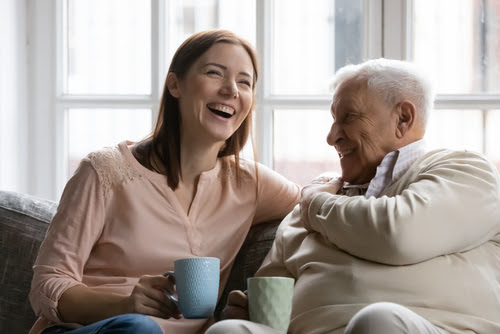Caregivers Benefit from Exercise Too!
The theme for this week …
Recently I shared about the benefits of exercise on cancer survivorship, cancer treatment, and cancer prevention.
In the background though, we need to remember the supporting role of caregivers! How can exercise support their well-being? Read on …
Caring for the caregiver!
It’s crucial to prioritize self-care as a caregiver to ensure you can provide the best support to your loved one.
Taking time for yourself through exercise not only boosts your physical health but also enhances your mental well-being, resilience, and overall quality of life.
The specific benefits of exercise for caregivers
Research, such as the study published in the National Center for Biotechnology Information, highlights the positive impact of self-care practices on caregivers’ ability to cope with stress and maintain a healthy work-life balance.
The study, Effects of a Home-Based Exercise Program on the Quality of Life and Health of Caregivers, comes from Spain. Some interesting study design elements were:
- Representative: Women over the age of 50 split into a control group and intervention group.
- Time efficient: Intervention participants only exercised for an hour, two times per week.
- Simple exercise components: The hour of exercise time was split between warm-up/cool-down, moderate aerobic movement, and body weight strength training.
- Dementia caregivers: Although there are demands specific to people with dementia, the results can generally apply to caregivers of people with other conditions.
The findings were interesting:
- Mental health benefits were somewhat better for the intervention group.
- Core strength and endurance were the most significant areas of physical difference. This is very important as many caregivers injure their backs. The exercises substantially helped with this.
How Bridging® can help
The physical demands of caregiving can be significant. When you get hurt in the process, it’s even more of a challenge.
A unique benefit of Bridging® is the immediate improvement in your pain and function. This fast help comes from two differentiating factors:
- Problem-solving: Taking the time to find the root cause of why your shoulder or back is bothering you. It might be a long-forgotten injury!
- Muscle reset process: The gentle rocking and stretching motion Bridging uses resets your muscle memory allowing, you to move easier.
Insight of the Week from Cara
My time caring for my son during his three years of cancer treatment was stressful in so many ways. Solace came from my exercise, and it was one of the few things where I felt any sense of control.
In the office we meet people who struggle with the stress and strain of caring for a loved one.
It’s my only ‘me’ time!
Take Michelle for example. Her mom is in her 80s with an increasing need for help. Michelle herself has some physical aches and pains. Although active, by the age of 58 she had had several bike falls, and surgery to remove her gallbladder.
Why did we meet Michelle?
Although the nagging pain and stiffness from her prior bike and surgical traumas used to be manageable, the added stress of caregiving leaves her feeling aching and tired all the time.
She realized she needed to be careful to avoid lasting effects from all the stress. A friend told her about Bridging®, so she thought she’d give it a try.
What did she get from her Bridging® session?
At the end of her session she remarked, “I feel like you got the oil can out for all my joints! I’m moving so much easier!”
With periodic Bridging® sessions, she leaves with her various muscle stresses reset so her strength and endurance are restored. The hour of support and peace has become essential to her mental health as well.

